Today’s Current Affairs: 26th Feb 2024 for UPSC IAS exams, State PSC exams, SSC CGL, State SSC, RRB, Railways, Banking Exam & IBPS, etc
Table of Contents
Purple Frog:
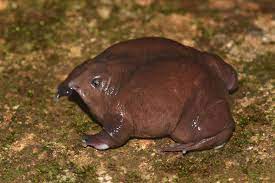
The government of Tamil Nadu established the Tamil Nadu Endangered Species Conservation Fund (TNESCF) to protect the purple frog and other lesser-known endangered species.
- Purple Frog is also known as the Maveli frog or Pignose Frog.
- It is believed to have coexisted with dinosaurs and has similarities to the Sooglossidae family of frogs in Seychelles.
- It is often called a ‘living fossil’ which belongs to the Nasikabatrachidae family.
- It has a bloated body with short stout limbs and is dark purple to greyish in colour.
- Tamil Nadu is home to two types of Purple frogs: Nasikabatrachus sahyadrensis and Nasikabatrachus bhupathi.
- It remains underground most of the year except for 2-3 weeks during the monsoon when it comes out to mate.
- Conservation status
- IUCN: Endangered
- Wildlife Protection (Amendment) Act, 2022: Schedule I
Shahpur Kandi Dam Project:

The completion of the Shahpur Kandi barrage, situated at the Punjab-Jammu and Kashmir border, has effectively halted the flow of water from the River Ravi to Pakistan
- Shahpur Kandi Dam Project is located on the Ravi River in Pathankot district, Punjab, downstream from the existing Ranjit Sagar Dam.
- The water released by Ranjit Sagar Dam is utilized for generating power from this project.
- The main purpose behind the construction of this dam is power generation and irrigation in Punjab and J&K States.
- It is constructed by the irrigation department of the Government of Punjab.
- The project consists of a 55.5 m high concrete gravity dam, a 7.70 km long hydel channel, two head regulators, and two powerhouses.
- The total output capacity of the project is 206 MW.
- Ravi River is a trans-boundary river of India and Pakistan.
- It is one of the five tributaries of the Indus River that give the Punjab (meaning “Five Rivers”) its name.
- It originates in the western Himalayas in the Multhan tehsil of the Kangra district of Himachal Pradesh.
Permafrost : Study
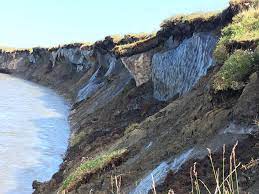
Permafrost in the Arctic could release radon, a radioactive gas that has the potential to cause cancer, scientists have warned.
- Radon is a radioactive gas that forms naturally when uranium, thorium, or radium, which are radioactive metals, break down in rocks, soil, and groundwater.
- It is an inert, colourless, and odourless gas.
- Radon gas usually exists at very low levels outdoors, but the gas can accumulate in areas without adequate ventilation, such as underground mines.
Permafrost:
- Permafrost is any ground—from soil to sediment to rock—that has been frozen continuously for a minimum of two years and as many as hundreds of thousands of years.
- It can extend down beneath the earth’s surface from a few feet to more than a mile, covering entire regions, such as the Arctic tundra, or a single, isolated spot, such as a mountaintop of alpine permafrost.
- Although the ground is frozen, permafrost regions are not always covered in snow.
- They can be found on land and below the ocean floor.
- It is found in areas where temperatures rarely rise above freezing point.
- They are most common in regions with high mountains and in Earth’s higher latitudes—near the North and South Poles.
- Permafrost is found almost exclusively in the far northern reaches and high elevations of the Northern Hemisphere, in places like Siberia, Alaska, the Canadian Arctic, Greenland, and the Tibetan Plateau.
- Permafrost is made of a combination of soil, rocks, and sand that are held together by ice. The soil and ice in permafrost stay frozen all year.
Household Consumption Expenditure Survey:

The government released the broad findings of the All India Household Consumption Expenditure Survey carried out between August 2022 and July 2023.
- Household Consumption Expenditure Survey is usually conducted by the National Statistical Office (NSO) every five years.
- This survey aims at generating estimates of household Monthly Per Capita Consumption Expenditure (MPCE) and its distribution separately for the rural and urban sectors of the country, for States and Union Territories, and for different socio-economic groups.
Highlights of the survey:
- The average monthly per capita consumption expenditure (MPCE) in Indian households rose by 33.5% since 2011-12 in urban households to ₹3,510, with rural India’s MPCE seeing a 40.42% increase over the same period to hit ₹2,008.
- The proportion of spending on food has dropped to 46.4% for rural households from 52.9% in 2011-12, while their urban peers spent just 39.2% of their overall monthly outgoes on food compared with 42.6% incurred 11 years earlier.
- This reduction could translate into a lower weightage for food prices in the country’s retail inflation calculations.
- Among the States, the MPCE is the highest in Sikkim for both rural (₹7,731) and urban areas (₹12,105).
- It is the lowest in Chhattisgarh, where it was ₹2,466 for rural households and ₹4,483 for urban household members.
Sub-national Climate Fund:

A delegation from the World Bank has arrived in Goa for talks with the state govt to set up the first sub-national climate resilient green fund.
- Sub-national Climate Fund is a global blended finance initiative to develop mid-size climate-resilient infrastructure & nature-based solutions.
- Mission is to invest in subnational climate-smart infrastructure and nature-based solutions delivering measurable and certified climate and sustainable development impact at the local level.
- The model is designed to attract public and private investment and to deliver certified climate and Sustainable Development impacts and Nature-based Solutions.
- Fund Manager: It is managed by Pegasus Capital.
- The International Union for Conservation of Nature (IUCN) is responsible for the Technical Assistance component of SCF.
- Anchor Investor of Concessional Capital: The Green Climate Fund (GCF)
Hanooman : Series Of Large Language Models
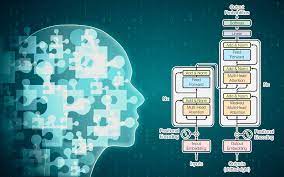
In collaboration with the BharatGPT ecosystem led by IIT Bombay, Seetha Mahalaxmi Healthcare (SML) has introduced ‘Hanooman,’ a suite of Indic large language models trained across 22 Indian languages.
- It is a series of large language models (LLMs) that can respond in 11 Indian languages like Hindi, Tamil, and Marathi, with plans to expand to more than 20 languages.
- It is a multimodal AI tool, which can generate text, speech, videos and more in multiple Indian languages.
- The size of these AI models ranges from 1.5 billion to a whopping 40 billion parameters.
- It has been designed to work in four fields, including health care, governance, financial services, and education.
- BharatGPT ecosystem is a research consortium led by IIT Bombay with seven other IITs.
- It is backed by the Department of Science and Technology, SML and Reliance Jio.
- Large language models use deep learning techniques to process large amounts of text.
- They work by processing vast amounts of text, understanding the structure and meaning, and learning from it.
647th Birth Anniversary Of Guru Ravidas:
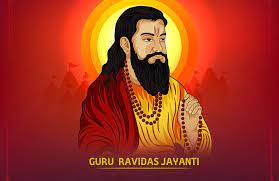
Birth anniversary celebrations of Sant Guru Ravidas, Prime Minister Narendra Modi unveiled a statue of Sant Ravidas at Varanasi.
- Guru Ravidas (1377-1528E.) was a renowned saint known for his contributions to the Bhakti movement.
- His devotional songs and verses made a lasting impact upon the Bhakti Movement.
- Guru Ravidas is also known as Raidas, Rohidas, and Ruhidas.
- He was born in a small village called Seer Govardhanpur in Uttar Pradesh.
- His birthplace is now known as Shri Guru Ravidas Janam Asthan, and it is a major place of pilgrimage for the followers of Guru Ravidas.
- Even though he was born into a poor family, Ravidas became well-known for his teachings about human rights and equality.
- He was the disciple of the revered Brahmin bhakti poet Ramananda.
- He abandoned the saguna forms of supreme beings and focussed on the nirguna form of supreme beings.
- Guru Ravidas was a social reformer, and his teachings were based on gender equality, the abolition of the caste system, social justice, and equality.
- He also became a symbol of opposition to untouchability in society by the higher caste people for the lower caste people.
- He emphasised the philosophy of spiritual freedom.
- He was a well-known poet. 41 of his devotional songs and poems are included in the Sikh Scriptures, Guru Granth Sahib.
- Meera Bai, a revered figure in Hindu spiritualism, is said to have considered Guru Ravidas as her spiritual Guru.
- The Guru’s teachings now form the basis of the Ravidassia sect.
- Ravidass is believe that Guru Ravidas should be treated as a saint just like the other gurus, as he lived before the first Sikh Guru and his teachings were studied by the Sikh Gurus.
- Guru Ravidas Jayanti is a Hindu festival that celebrates the birth anniversary of Guru Ravidas.
Nihang Sikhs:
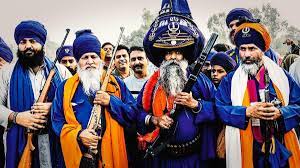
Amid the recent standoff between the protesting farmers and the government, Nihang Sikh warriors have joined the protest, extending support to farmers facing off with security forces
- Nihangs, originally known as Akalis or Akali Nihangs, are a distinct warrior order within the Sikh community, known for their martial traditions, unique attire, and adherence to a specific code of conduct.
- They have a rich history dating back to the times of Guru Gobind Singh, the 10th Sikh Guru.
- They are easily recognizable by their distinctive blue attire, which includes blue robes, and high turbans adorned with steel quoits (chakrams), and they often carry traditional weapons like swords, spears, and daggers.
- They are highly skilled in Gatka martial arts and have historically served as a dedicated and elite force to protect Sikh shrines and communities.
- Nihangs had a major role in defending the Sikh Panth after the fall of the first Sikh rule (1710-15) when Mughal governors were killing Sikhs and during the onslaught of Afghan invader Ahmed Shah Durrani (1748-65).
- Nihangs are today divided into several groups, each with its own “chhaoni” (cantonment), but are loosely organised into two “dals” (forces)—Buddha Dal and Taruna Dal, names initially given to the two sections into which the ‘Khalsa’ army was divided in 1733.
Ayush Holistic Wellness Centre:
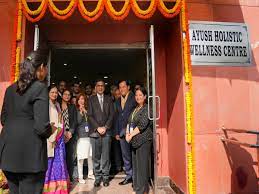
The Chief Justice of India, inaugurated the ‘Ayush Holistic Wellness Centre (AYUSH HWC)’ at the Supreme Court (SC) of India, marking a significant milestone in promoting holistic health within the judiciary.
- The AYUSH HWC is a collaborative effort between the SC and the All-India Institute of Ayurveda under the Ministry of Ayush.
- The centre is furnished to deliver cutting-edge holistic care, in harmony with Ayurvedic principles and methodologies, targeting enhancing physical, mental, and emotional wellness for comprehensive health promotion.
- AYUSH HWC is a component of Ayushman Bharat in the National AYUSH Mission (NAM).
Pigeonpea : Development Of Improved Varieties

A new fast-breeding protocol has been developed by scientists at the International Crops Research Institute for the Semi-Arid Tropics (ICRISAT) to accelerate the development of improved varieties of pigeonpea, an essential legume crop for nutritional security in drylands.
- Traditionally, developing a new pigeonpea variety takes around 13 years, but the new protocol can potentially reduce this breeding cycle to just two to four years.
- Pigeon Peas are widely cultivated in tropical and semitropical regions around the world. In India, more than 80% of tur production comes from six states: MS, MP, Karnataka, UP, Gujarat, and Jharkhand.
- Pigeon peas are commonly eaten in the form of the split pulse as “dal”
- Speed breeding is a plant breeding technology that uses protocols to accelerate flowering in crop plants.
- It uses optimal light quality, intensity, photoperiod, and temperatures to improve biomass accumulation and stimulate flowering and seed production.
- Speed breeding also uses immature seed harvesting to curtail the generation time.
Brain-Computer Interface:

According to Elon Musk, the first human received an implant from his computer-brain interface company Neuralink.
- Since its founding in 2016, Elon Musk’s neurotechnology company Neuralink has had the ambitious mission to build a next-generation brain implant with at least 100-times more brain connections than devices currently approved by the U.S. Food and Drug Administration (FDA).
- Brain-Computer Interface is a technology that enables direct communication between the brain and external devices, such as computers or prosthetics, without using traditional neuromuscular pathways like nerves and muscles.
- BCI typically involves the use of sensors to detect brain activity, which is then translated into commands or actions, allowing individuals to control devices or interact with the external world using their thoughts.




